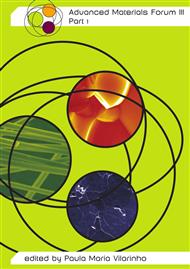p.1608
p.1613
p.1618
p.1623
p.1628
p.1633
p.1638
p.1643
p.1648
A Comparison between X-Ray Diffraction and Petrography Techniques Used to Determine the Mineralogical Composition of Granite and Comparable Hard Rocks
Abstract:
Petrography and X-ray diffraction techniques are used in this work to determine the mineralogical composition of a granite, a gabbro and a quartzite. The experimental difficulties and the results obtained by both methods are described and discussed. The semi-quantitative procedure of XRD analysis used in this work allows an estimate of the relative mineral phase composition of each type of rock. Petrography was found to be crucial in terms of textural analysis.
Info:
Periodical:
Pages:
1628-1632
Citation:
Online since:
May 2006
Authors:
Price:
Сopyright:
© 2006 Trans Tech Publications Ltd. All Rights Reserved
Share:
Citation:


